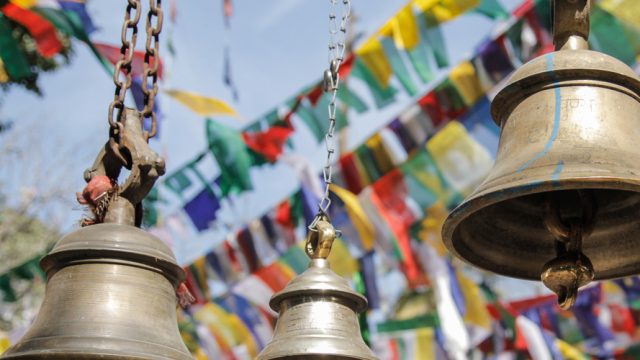Dorje-ling. Thunder–storm.
Stop. Take a deep breath. Soak in the view. Feel the purity of the air from this holy space in the queen of hill stations, Darjeeling.
Popularly called ‘The Mahakal Mandir’, the sanctity of this elevated abode of the Gods fills the air of Darjeeling with purity and peace. Serving as the panopticon, it overlooks as well as looks after this hill station, which has changed consistently over the years. Located at the highest crease of the Mall Road or the Chowrasta (as the locals prefer to call it) the way to the Mandir is roughly around a 15- 20 minute walk uphill (depending on how old your bones feel!). The walk is breathtakingly, and rightly so, beautiful. One can expect to be taken aback by the view of the Kanchenjunga mountains, the smell of wood and bhuttas (charred corn) and overwhelmingly friendly fellow pilgrims- humans and monkeys. On the way to the mandir, it is a common sight to find tourists chatting with the locals, momolas and popolas (grandmothers and grandfathers) pace faster than the youngsters and hear the call of the bells. With railings and bars ringed with prayer flags, brightly hued holy threads and khadas (holy white scarves), it is the vibrancy of this short journey that ceases to leave, though one might have left the destination. Prepare to be greeted by grand gates and entrances, deafening ringing of bells and trance-like rhythmic chants emerging out of every corner.

Darjeeling’s colonial heritage has left many in a state of awe. From its architecture, railways, tea gardens to its roads, the impact of colonialism is as tangible as it can get. ‘Divide and rule’, however, is not something that has been able to sink its teeth into the colourful culture of this hilly town. What one can gather, is the absolute harmony that exists amongst those who revel in this heterogeneity. This is perhaps one of the only places where you can witness a Hindu pandit and a Buddhist monk sitting across each other and chanting, within the main temple- the Mahakal Mandir. The sight of this alone is enough to make one feel the presence of something otherworldly. Though it is called the Mahakal Mandir, it really is a complex serving many Gods. What comes as a delightful surprise is how easily the monks and pandits slip into casual conversation with tourists and visitors, telling them stories about the history of this spiritual complex, the legends related to their religion, while also going back into praying for the wellbeing of those who hear these stories. Marked with red, yellow and orange teekas (a holy powder which is applied on the forehead), colourful threads on wrists and savouring the sweet prasad (the religious substance of food used as an offering) from the temples, one tour of the holy hilltop is never enough. The entire complex speaks sanctity as it houses temples of Lord Shiva, Siddhi Sai Baba, Hanuman, Lord Ram; Goddess Kali, Goddess Parvati and many more elaborate idols which demand attention and command power. The temple complex is not the only space atop the hill- there are a few caves and tiny rock-like structures hidden away as one decides to explore the lower parts of the hill. Beware of steep and slippery steps while you step down!
The compelling history of this holy hilltop never goes ignored. The original ‘Dorjeling Monastery’ was first situated here, before a Sikkimese invasion. Now called the ‘Bhutia Busti Monastery’, it has been relocated and stands as tall as it was, around 1.5 kilometres from the temple complex. So, plan your visit to Darjeeling and get ready to experience piousness like never before.
Getting there
Vistara, IndiGo, Jet Airways and Air India are some of the few airlines which go to the Bagdogra International Airport.
You can hail a cab at the airport and the journey from Bagdogra to Darjeeling (67 kms approx) will take around 2 hours and 30 minutes.
Cabs and any other vehicles are not allowed in the Mahakal Mandir area. Walk it!




